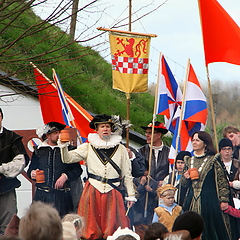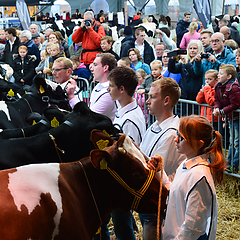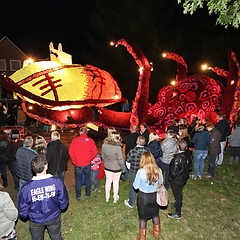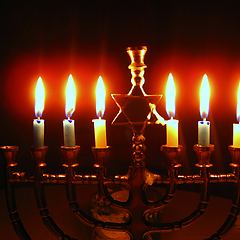King’s Day is the celebration of King Willem-Alexander’s birthday. Throughout the Kingdom of the Netherlands King’s Day, formerly Queen’s Day, is celebrated. Almost everyone has the day off and there are King’s Day activities, street markets and feasts in the villages and towns in the whole kingdom. There are children’s activities with traditional games like koekhappen and funny sports events. Most of the time it is the local Orange Societies organising the activities. The Dutch like to dress in orange or red-white-blue on this day and in some places the houses are decorated as well. The festival often begins with hoisting the flag by the mayor at the town hall, and an aubade. The national flag with its three colours and the orange pennon fly on public buildings and many houses. Tompouces – cakes with orange icing – are sold and people drink oranjebitter. Many people watch television in the morning, when the royal family visits several places in the Netherlands. In many places the day ends with grandiose fireworks.
Description
Community
Almost every Dutchman is in one way or another busy with the celebration of King’s Day. Almost 1100 Orange Societies, Orange Committees and Foundations in the Kingdom of the Netherlands are involved in the organisation of the festivities. An important bearer of the tradition is the Koninklijke Bond van Oranjeverenigingen in Nederland (The Royal Union of Orange Societies in the Netherlands), in which 360 societies are united. Municipal authorities, the police and educational institutions are often involved in the organisation of the events. The most important parts, of course, are reserved for King Willem-Alexander, Queen Máxima and the princesses Amalia, Alexia and Ariane.
History
The inventor of Queen’s Day was J.W. Gerlach, chief editor of the Utrecht Provincial and Municipal Journal. He proposed to organise a national holiday on the birthday of Princess Wilhelmina (August 31). He considered this an important symbol for the national unity. For the first time in 1885 Princess’ Day was celebrated in Utrecht. With the inauguration of Queen Wilhelmina (1898) Queen’s Day became a feast for the children, because the day coincided with the last day of the traditional school holiday. The celebration of that day was given an extra impulse after Queen Wilhelmina had been seriously ill. The notice of her recovery turned Queen’s Day into a real popular feast. The royal family only attended the festivities at special occasions. After the entry of Queen Juliana (1948) Queen’s Day was celebrated on April 30. The parade that was taken by the royal family from the platform of Soestdijk Palace was directly broadcasted on television. During the reign of Queen Juliana April 30th became a national holiday. Under Queen Beatrix (1980-2013) Queen’s Day was still celebrated on April 30. The celebration did change character. Queen Beatrix herself went, with her family, to two places to attend the festivities. At the inauguration of King Willem-Alexander on April 30th in future, his birthday.
Contact
Koninklijke Bond van OranjeverenigingenJohanna Naber-Erf 273
3315 HH
Dordrecht
Netherlands
Website



